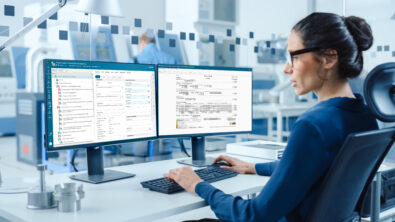ALM-PLM integration – real visibility across domains.

 The lack of clear visibility across domains and interoperability of your ALM-PLM environment leads to integration problems, regulatory certification challenges, and quality issues that all lead to potential cost over-runs and schedule delays.
The lack of clear visibility across domains and interoperability of your ALM-PLM environment leads to integration problems, regulatory certification challenges, and quality issues that all lead to potential cost over-runs and schedule delays.
While especially true for the automotive industry, companies in all industries face three key issues in the development and delivery of embedded software and systems. First, how to develop and facilitate cross-discipline collaboration Second, how to integrate hardware and software co-development tools, data and process. Third, how to ensure visibility and adherence to standards and regulatory guidelines.
Manage Collaboration Across Disciplines
Effective collaboration across disciplines requires an open, standards-based approach that enables multi-domain tool and process integration. This approach enables hardware and software teams to each use the tools they need for their job functions. Separation between the ALM and PLM systems must be completely hidden from the end user.
 To achieve real ALM-PLM interoperability the integration must also go beyond the simple ability to link and access data. It must enable real-time collaboration from everywhere, with any device, and deliver impact analysis across different items belonging to different domains and process phases; from features and requirements to tasks, tasks to design data, design data to the Bill-of-Materials, test cases to bugs, change requests to test plans.
To achieve real ALM-PLM interoperability the integration must also go beyond the simple ability to link and access data. It must enable real-time collaboration from everywhere, with any device, and deliver impact analysis across different items belonging to different domains and process phases; from features and requirements to tasks, tasks to design data, design data to the Bill-of-Materials, test cases to bugs, change requests to test plans.
To truly foster a collaborative environment the system must provide a common logical repository for all the hardware and software related artifacts and feature definitions, as well as provide the ability to manage the interface definitions for all your features and system functions. It must also enable design teams to access the information and processes even when they span multiple product configurations or design variants, and do this across the entire product lifecycle.
Orchestrate Change Requests More Efficiently
 True ALM-PLM interoperability also fosters a systems-driven approach to product development that enables multidisciplinary change management and impact analysis. By linking hardware and software requirements to the physical design of the product it is much more straight-forward to intelligently assess the impact of changes to requirements on the hardware and software, as well as how changes to the hardware or software will impact the requirements.Once a change order is issued, it’s that same level of requirements, software and hardware traceability the helps confirm what will be changed, what domains will be involved, how it will be tested, what testing and workflow approval process are to be followed, and where the change is in the process.
True ALM-PLM interoperability also fosters a systems-driven approach to product development that enables multidisciplinary change management and impact analysis. By linking hardware and software requirements to the physical design of the product it is much more straight-forward to intelligently assess the impact of changes to requirements on the hardware and software, as well as how changes to the hardware or software will impact the requirements.Once a change order is issued, it’s that same level of requirements, software and hardware traceability the helps confirm what will be changed, what domains will be involved, how it will be tested, what testing and workflow approval process are to be followed, and where the change is in the process.
A Complete System Development Ecosystem
 Effective delivery of embedded systems requires ALM-PLM interoperability across an entire ecosystem of development tools and processes. When developing new software, or incorporating changes into existing modules the software development team is dependent on the integration with a source code editor, software modeling, build automation tools, a debugger and test tools. True ALM-PLM interoperability provides access to your favorite modeling tools and ensures that the source code is managed within an environment where everyone has access to the information needed for design reviews and test and validation. A key component of which is the availability of easy to understand dashboards and reports for improving the overall decision making process.
Effective delivery of embedded systems requires ALM-PLM interoperability across an entire ecosystem of development tools and processes. When developing new software, or incorporating changes into existing modules the software development team is dependent on the integration with a source code editor, software modeling, build automation tools, a debugger and test tools. True ALM-PLM interoperability provides access to your favorite modeling tools and ensures that the source code is managed within an environment where everyone has access to the information needed for design reviews and test and validation. A key component of which is the availability of easy to understand dashboards and reports for improving the overall decision making process.
Conclusion
This type of ALM-PLM interoperability is an integral component of model-based systems-driven product development, a holistic approach to the development and delivery of today’s complex products. Take a look at this short video to see how Teamcenter and Polarion ALM provide seamless ALM-PLM interoperability for managing your hardware and software development lifecycle. While specifically focused on the automotive industry the concepts in this video are applicable across all industries.


